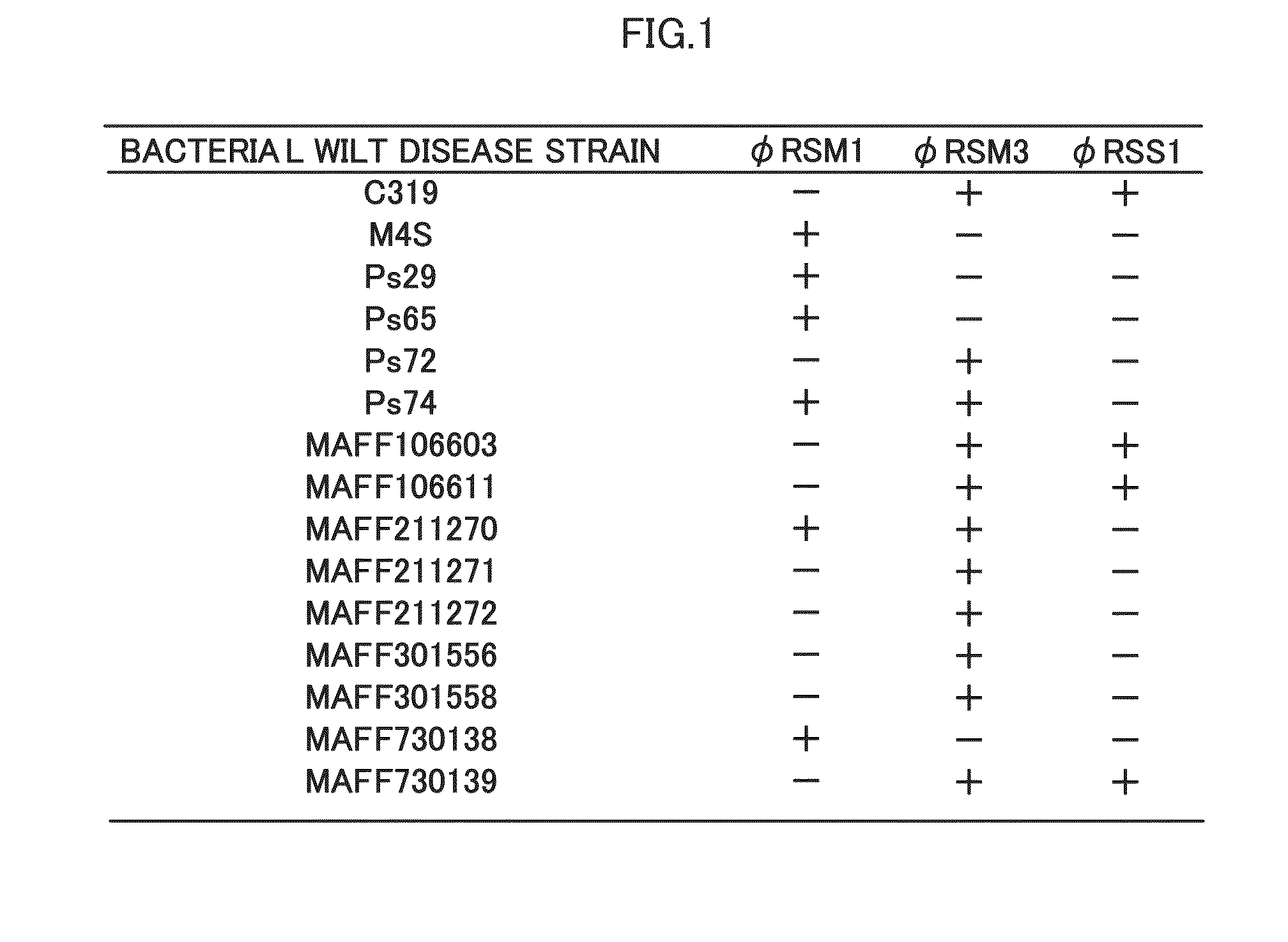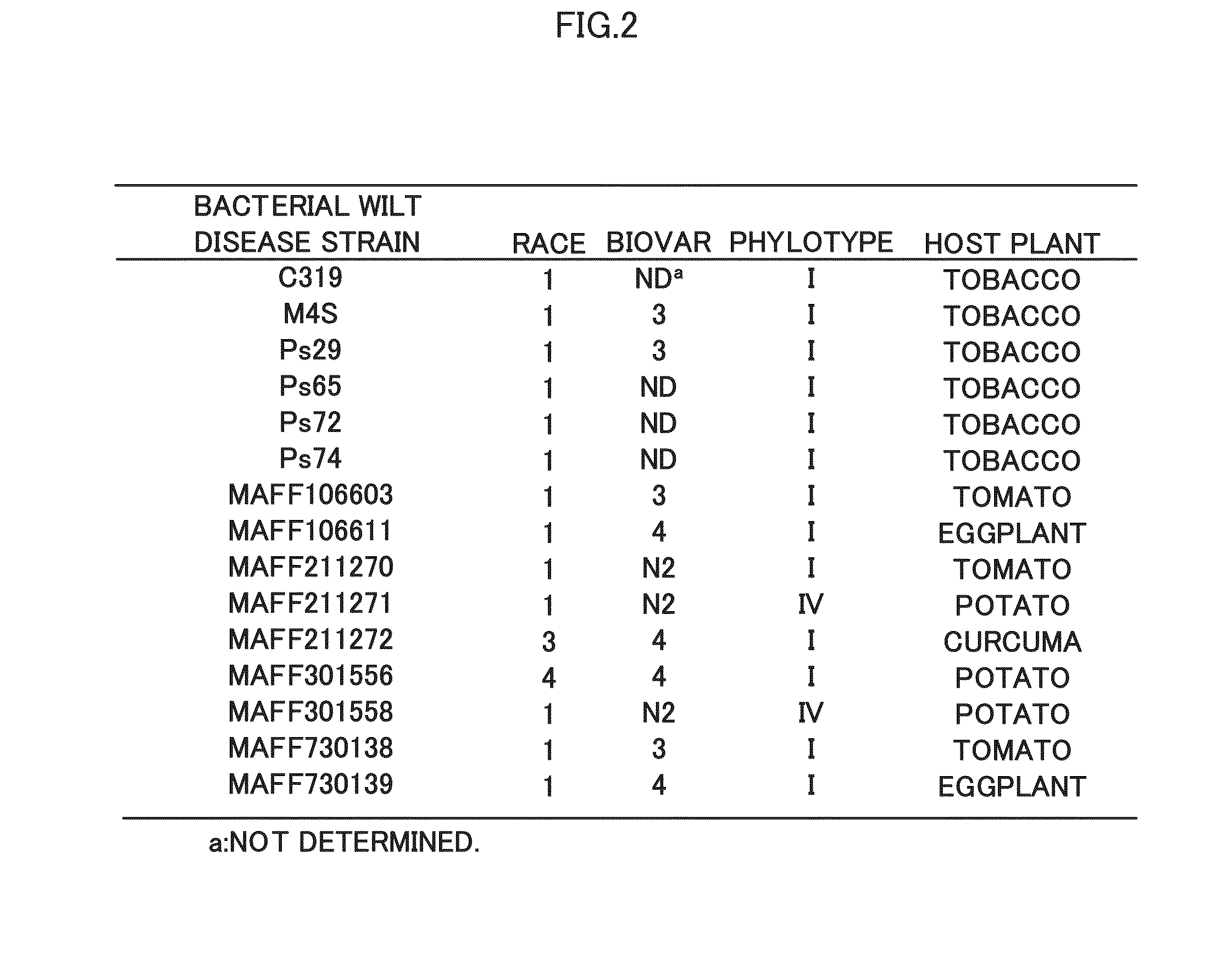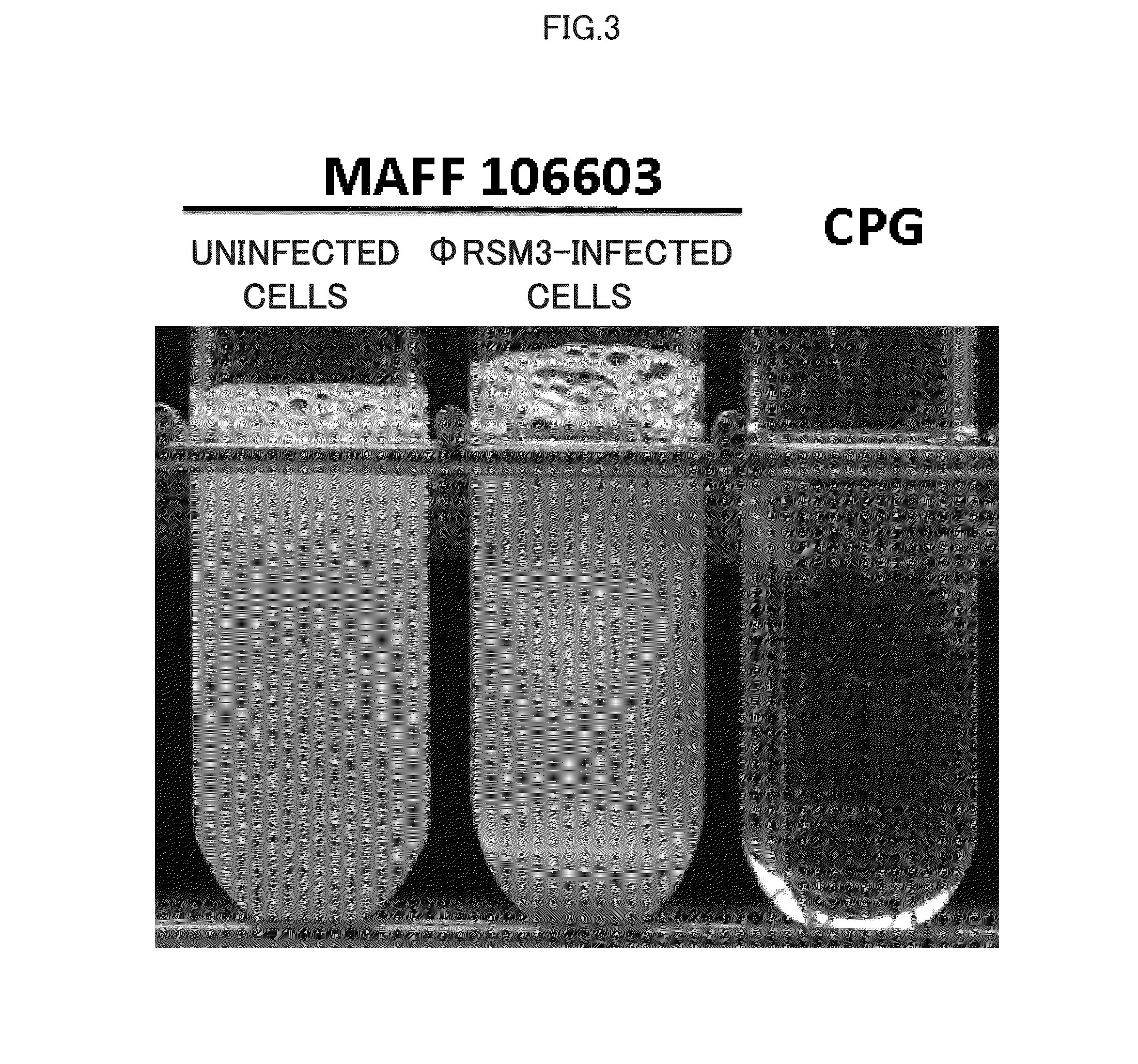Agent for Preventing Bacterial Wilt Disease, and Method for Preventing Bacterial Wilt Disease
a technology for bacterial wilt and agents, applied in the direction of viruses/bacteriophages, biocide, genetic material ingredients, etc., can solve the problems of chloropicrin and methyl bromide being dangerous drugs, serious damage to agriculture, and the death of plants, so as to prevent the development and prevent the effect of bacterial wil
- Summary
- Abstract
- Description
- Claims
- Application Information
AI Technical Summary
Benefits of technology
Problems solved by technology
Method used
Image
Examples
examples
[0056]The present invention is described below in more detail by way of Preparation Example and Examples, but the Preparation Examples and Examples do not limit the present invention. The Preparation Example and Examples below were carried out under the conditions for the method described in detail in “Mitsuo Horita and Kenichi Tsuchiya, 2002, Microorganism Genetic Resources Manual (12)—Wilt Bacterium Ralstonia solanacearum—, National Institute of Agrobiological Sciences”.
preparation example
[0057]Preparation examples for the wilt bacterium and the phages are briefly described below. Various bacterial wilt disease strains (all of which were obtained from National Institute of Agrobiological Sciences (Japan)) before infection with the phages were prepared by culturing in a CPG liquid medium comprising 0.1% casamino acid, 1% peptone and 0.5% glucose in distilled water at 28° C. with shaking at 200 to 300 rpm. In terms of the phages, the φRSM3 phage was grown using as a host bacterium the bacterial wilt disease strain MAFF 106611, and the φRSM1 phage was grown using as a host bacterium the bacterial wilt disease strain M4S. More specifically, each phage was added to each host bacterium grown in CPG medium (early logarithmic growth phase, OD600=0.1), such that MOI=0.01 to 0.05 was achieved, and the bacterium was then cultured for 16 to 18 hours, followed by removal of the bacterial cells by centrifugation (8,000×g), filtration of the obtained supernatant through a filtratio...
example 1
[0058]In the present Example 1, an experiment for confirming the pathogenicity of the φRSM3 phage-infected bacterial wilt disease strain MAFF106603 is described in detail.
[0059]The bacterial wilt disease strain MAFF106603 was infected with the prepared φRSM3 phage (MOI=10), and a single colony was selected on a CPG agar medium (pH 6.8 to 7.0) comprising 0.1% casamino acid, 1% peptone, 0.5% glucose and 1.7% agar in distilled water (confirmed by restriction enzyme treatment). The colony was cultured with shaking in a CPG liquid medium comprising 0.1% casamino acid, 1% peptone and 0.5% glucose in distilled water at 28° C. to OD600=0.2. Thereafter, 5 μl of the culture liquid was inoculated to a site between the second and third true leaves of tomato plants (Saturn) 1 to 6 weeks after germination using a sterile syringe. As a control, the bacterial wilt disease strain MAFF 106603 uninfected with the φRSM3 phage was inoculated to tomato plants (Saturn) under the same conditions. The inocu...
PUM
| Property | Measurement | Unit |
|---|---|---|
| Length | aaaaa | aaaaa |
| Time | aaaaa | aaaaa |
| Weight | aaaaa | aaaaa |
Abstract
Description
Claims
Application Information
 Login to View More
Login to View More - R&D
- Intellectual Property
- Life Sciences
- Materials
- Tech Scout
- Unparalleled Data Quality
- Higher Quality Content
- 60% Fewer Hallucinations
Browse by: Latest US Patents, China's latest patents, Technical Efficacy Thesaurus, Application Domain, Technology Topic, Popular Technical Reports.
© 2025 PatSnap. All rights reserved.Legal|Privacy policy|Modern Slavery Act Transparency Statement|Sitemap|About US| Contact US: help@patsnap.com



